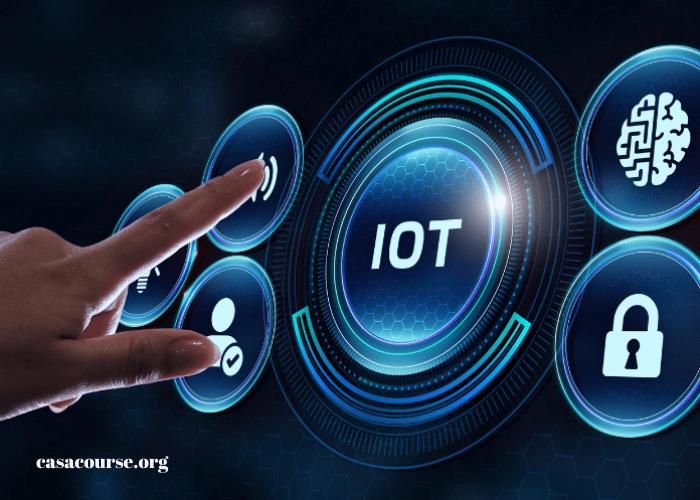In the rapidly evolving landscape of technology, the Internet of Things (IoT) stands out as a transformative force, revolutionizing the way we interact with the world. The concept of IoT revolves around the seamless connection of everyday objects to the internet, enabling them to communicate, collect, and exchange data. This interconnectedness is not just a futuristic vision but a present-day reality, reshaping industries, enhancing efficiency, and improving our daily lives. In this article, we delve into the multifaceted world of IoT solutions, exploring their impact, applications, and future prospects.
Understanding IoT
The Internet of Things is a network of physical objects embedded with sensors, software, and other technologies that enable them to connect and exchange data with other systems over the internet. These “smart” devices can range from household appliances like refrigerators and thermostats to complex industrial machines and transportation systems. The core idea is to create a more intelligent and responsive world by integrating digital intelligence into physical objects.
The Impact of IoT Solutions
Enhanced Efficiency and Automation
One of the most significant advantages of IoT solutions is the ability to enhance efficiency through automation. In industrial settings, IoT sensors monitor machinery and equipment in real time, detecting potential issues before they escalate into costly problems. For instance, predictive maintenance systems can analyze data from equipment sensors to predict failures and schedule maintenance proactively, thus reducing downtime and operational costs.
Similarly, in smart homes, IoT-enabled devices automate routine tasks, such as adjusting thermostats based on occupancy patterns or turning off lights when no one is present. This not only improves convenience but also optimizes energy consumption, leading to cost savings and environmental benefits.
Data-Driven Insights
IoT generates vast amounts of data from connected devices, providing valuable insights into various aspects of operations and user behavior. Businesses leverage this data to make informed decisions, optimize processes, and tailor their offerings to meet customer needs. For example, retail stores use IoT data to track inventory levels, analyze customer foot traffic, and personalize marketing efforts based on consumer preferences.
In healthcare, IoT solutions facilitate remote monitoring of patients’ vital signs and health metrics. This data allows healthcare providers to offer personalized care, track treatment effectiveness, and intervene promptly in case of anomalies. The result is improved patient outcomes and more efficient healthcare delivery.
Improved Safety and Security
IoT solutions play a crucial role in enhancing safety and security across various domains. In smart cities, IoT sensors monitor environmental conditions, detect pollution levels, and manage traffic flow to ensure safer and more efficient urban living. For instance, smart surveillance systems equipped with IoT technology can provide real-time alerts for suspicious activities, helping law enforcement agencies respond quickly.
In the realm of cybersecurity, IoT solutions can bolster security measures by providing real-time monitoring and threat detection. IoT-enabled security systems can detect unusual network activity, identify potential breaches, and trigger automated responses to mitigate risks.
Applications of IoT Solutions
Smart Homes
The concept of smart homes has gained significant traction with the advent of IoT. Smart home devices, such as smart thermostats, lighting systems, and security cameras, offer homeowners unprecedented control and automation. Through smartphone apps and voice-controlled assistants, users can manage their home environment from anywhere, ensuring comfort, energy efficiency, and security.
Industrial IoT (IIoT)
In the industrial sector, IoT solutions are driving the fourth industrial revolution, known as Industry 4.0. IIoT involves the integration of IoT technology into manufacturing and industrial processes, leading to smarter factories and supply chains. IoT sensors monitor production lines, track inventory, and optimize resource allocation, resulting in increased productivity and reduced operational costs.
Healthcare
IoT is revolutionizing healthcare by enabling remote patient monitoring, telemedicine, and smart medical devices. Wearable devices, such as fitness trackers and smartwatches, collect health data and transmit it to healthcare providers for analysis. This real-time monitoring facilitates early diagnosis, personalized treatment, and proactive management of chronic conditions.
Transportation and Logistics
IoT solutions are transforming transportation and logistics by providing real-time tracking, route optimization, and fleet management. Smart transportation systems monitor vehicle performance, track shipments, and analyze traffic patterns to improve efficiency and reduce delays. For instance, IoT-enabled logistics platforms offer end-to-end visibility of the supply chain, enhancing inventory management and delivery accuracy.
Challenges and Considerations
While IoT solutions offer numerous benefits, they also present challenges that need to be addressed:
Data Privacy and Security
The proliferation of connected devices increases the risk of data breaches and cyberattacks. Ensuring robust data privacy and security measures is essential to protect sensitive information from unauthorized access. Implementing encryption, secure authentication protocols, and regular software updates are crucial to safeguarding IoT systems.
Interoperability
The diverse range of IoT devices and platforms can lead to interoperability issues. Ensuring seamless communication and integration between different systems is vital for maximizing the potential of IoT solutions. Standardization efforts and open protocols can help address these challenges and promote compatibility.
Scalability
As the number of connected devices continues to grow, scalability becomes a critical consideration. IoT solutions must be designed to handle increasing data volumes and device connections without compromising performance. Cloud-based solutions and edge computing can help address scalability challenges by distributing data processing and storage.
The Future of IoT Solutions
The future of IoT is promising, with advancements in technology driving new possibilities. Emerging trends include the integration of artificial intelligence (AI) and machine learning with IoT, enabling more intelligent and autonomous systems. AI-powered IoT solutions can analyze vast amounts of data, identify patterns, and make real-time decisions, further enhancing efficiency and automation.
Additionally, the expansion of 5G networks is set to accelerate the growth of IoT by providing faster and more reliable connectivity. The increased bandwidth and lower latency of 5G will support the deployment of more advanced IoT applications, such as smart cities and autonomous vehicles.
Conclusion
IoT solutions are at the forefront of technological innovation, connecting the world through smart tech and transforming various aspects of our lives. From enhancing efficiency and automation to providing valuable data-driven insights, IoT is reshaping industries and improving daily experiences. As we look to the future, the continued evolution of IoT technology promises even greater advancements, driving progress and unlocking new opportunities for a more connected and intelligent world.



